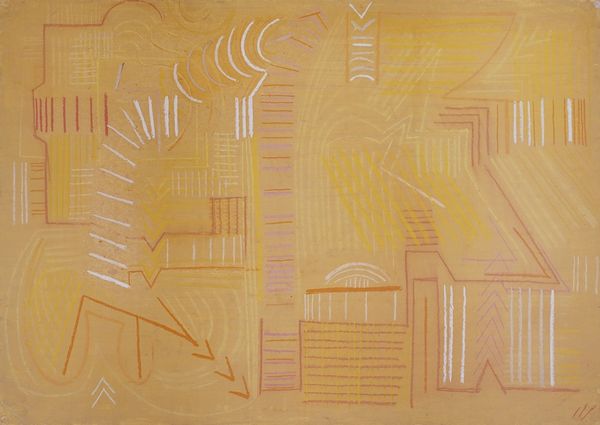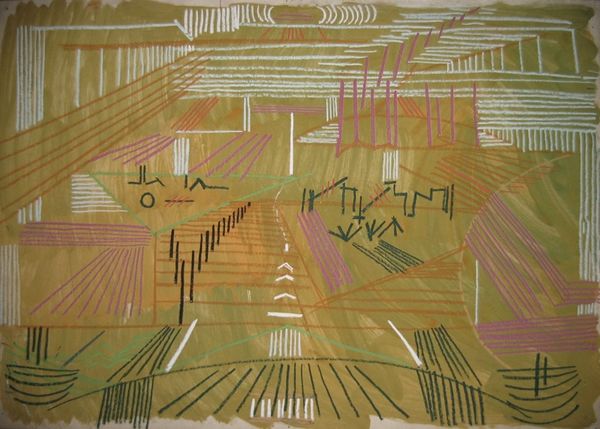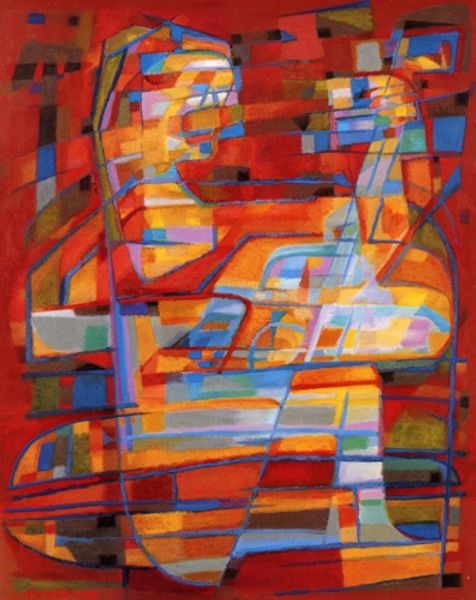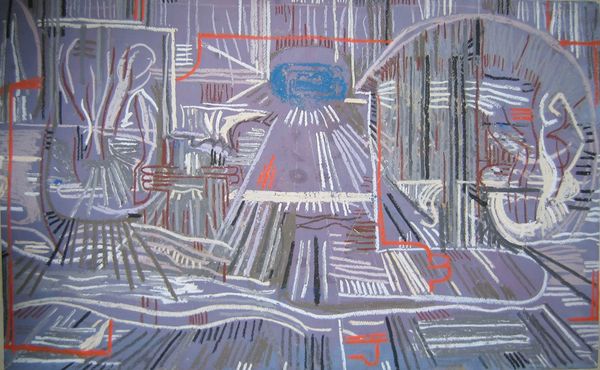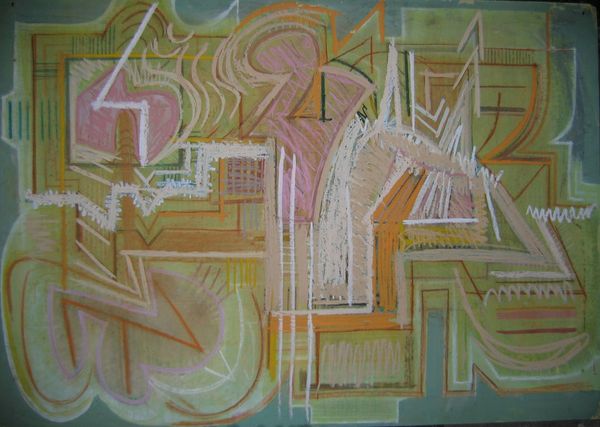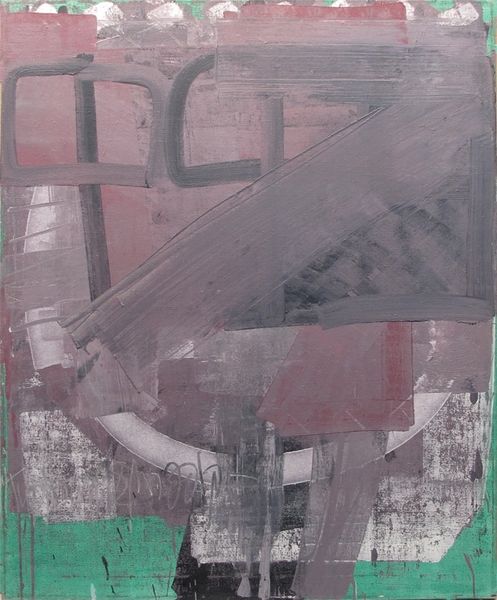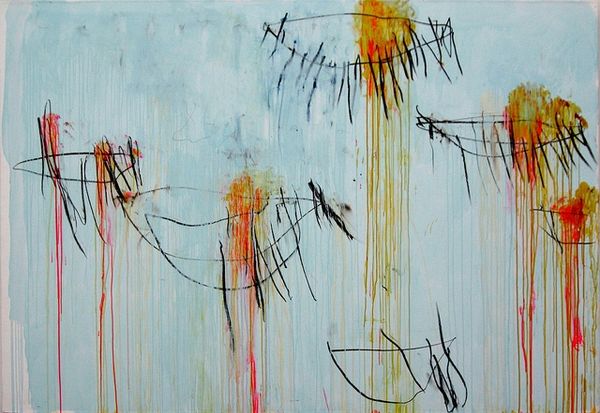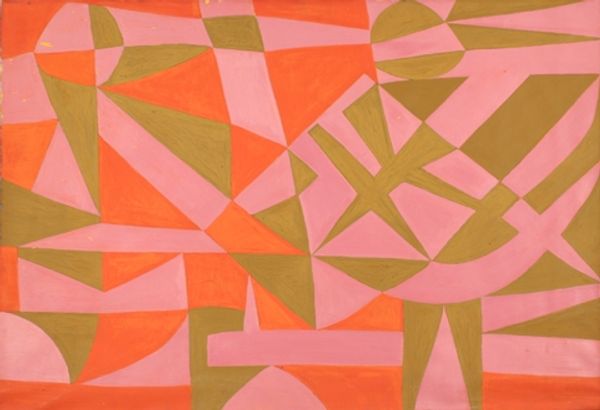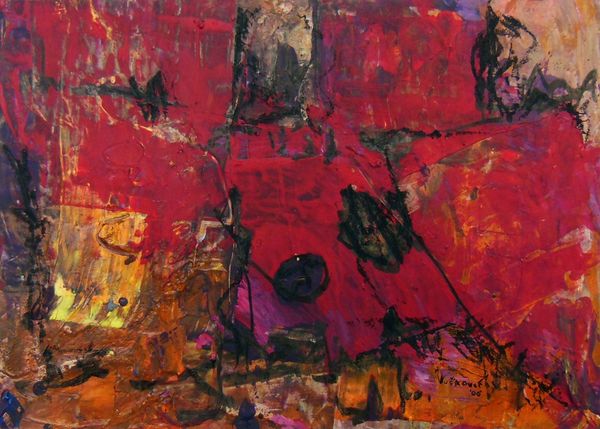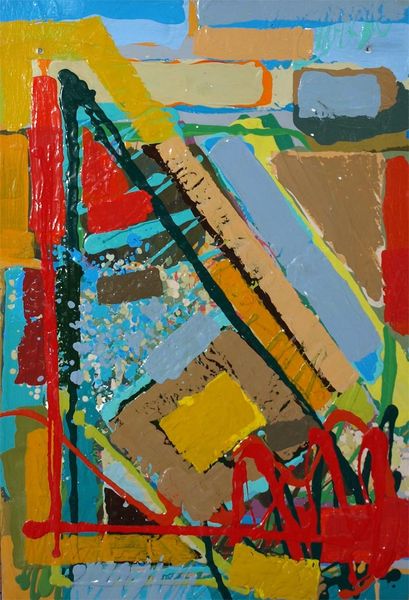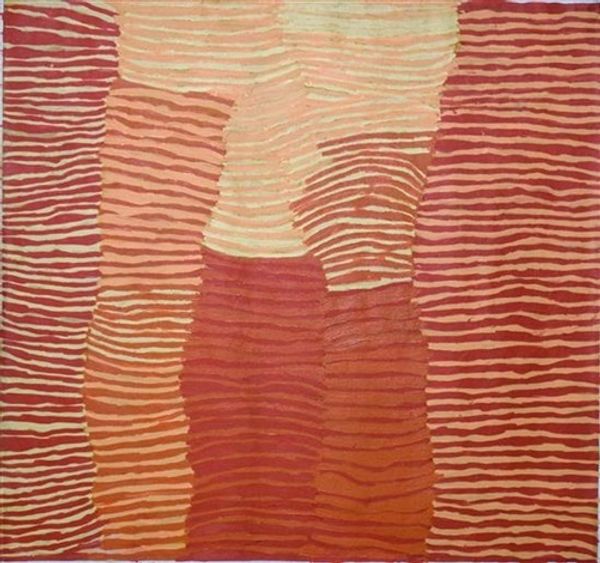
#
abstract expressionism
#
abstract painting
#
pop of colour red
#
red and grey tone
#
pattern
#
abstract pattern
#
neo expressionist
#
hot abstract
#
paint stroke
#
line
#
abstract art
#
bleeding line
#
orange
Copyright: Constantin Flondor,Fair Use
Editor: This is Constantin Flondor’s "Study (Field/Space)," from 1966. It looks like it’s a mix of different lines and shapes. The palette, mostly reds and greys, makes it seem warm, almost unsettling, actually. What strikes you most when you look at it? Curator: Well, immediately, the use of simple, readily available materials points toward a questioning of traditional art making. We have line work creating a space and hinting at volume, a depth through which the means of construction is visible. Can we truly divorce it from, say, a technical drawing? Is this about process and labour, just displayed differently? Editor: Technical drawing? It does have a certain architectural feel with all the lines. But isn't abstract expressionism supposed to be more about emotion? Curator: Emotion, perhaps, but also consider the context. It was created in the 60’s when mass production and consumerism were taking off. The industrial is subtly at play here. Note how repetitive gestures suggest labor - is this painting also commenting on factory output or something else entirely? Flondor also subverts the elevated status often granted art. Editor: I see your point about mass production influencing art, even abstract art. I hadn’t thought about it like that before. So, it’s less about pure emotion, and more about the artist's process, the materials, and even the economic context surrounding it? Curator: Precisely. It’s not just about what you see, but how it was made, why those materials were chosen, and what conditions made that choice possible. This gives it a critical edge. It reflects material circumstances, and the labour used to create the artwork. Editor: Thanks. I am rethinking a lot now and seeing the artist's intention within broader systems. Curator: Indeed. By viewing art as a product of material and social forces, we can begin to grasp the messages being conveyed beyond the purely aesthetic level.
Comments
No comments
Be the first to comment and join the conversation on the ultimate creative platform.
